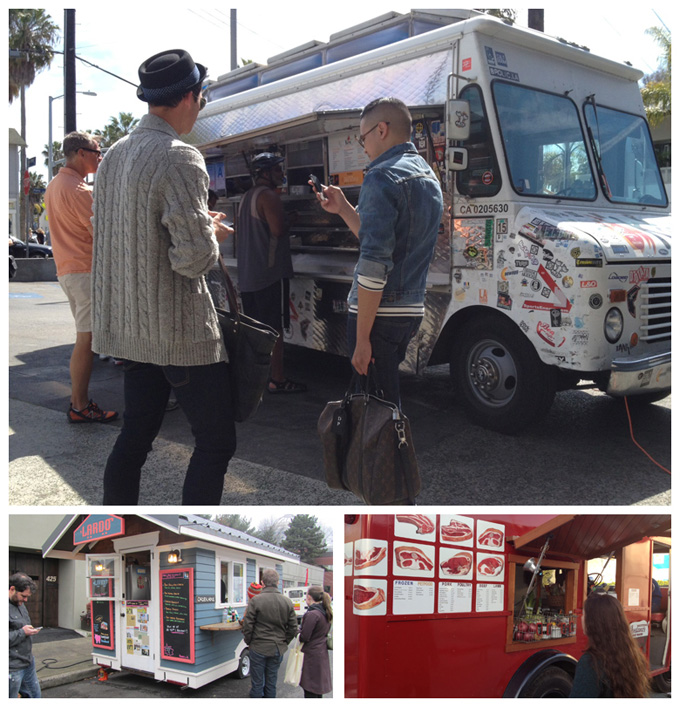Featured Indicators
 Butchery
A lean and tattooed hipster holds a cleaver above a pig carcass, explaining the nuances of leaf lard...
Butchery
A lean and tattooed hipster holds a cleaver above a pig carcass, explaining the nuances of leaf lard...
 Backyard livestock
Checklist for an enviable backyard: A sparking turquoise kidney-shaped pool with a waterfall f...
Backyard livestock
Checklist for an enviable backyard: A sparking turquoise kidney-shaped pool with a waterfall f...
Cultural Indicator
Food trucks

It’s 5:30 PM on a First Friday in Venice, CA. The line for the grilled cheese truck is already a half-hour long. A man emerges from the truck with a tray of artisanal tater tots, plying the impatient crowd with greasy morsels while letting everyone know that sandwiches don’t start till 6 o’clock. No matter — by then the line will be an hour long. And by 7, it’ll be a two-hour wait, minimum.
Are the sandwiches life-changing? We’ve had better. But the wait is still worth it, for the simple pleasure of being outside on a balmy Friday night, watching the culture shift before our eyes.
Food trucks and their brethren —food stalls, food carts, food trailers, food stands — have been a deep part of culture outside the US for hundreds of years. But in the past five years, we’ve seen a surge in the number of food trucks in this country, especially in cities like Portland, San Francisco and Austin where the weather is decent year-round and the zoning regulations are relatively lax. What’s going on?
The food truck revolution in the US is a result of several factors, all converging to create the perfect storm: a burgeoning “foodie” culture that always seeks out the new; the “rock star” chef phenomenon that turns cooking into a high-status profession; mass unemployment among young people (who both create and patronize trucks; the mass penetration of social media, which allows trucks to be coveted, rated, and found; and — finally and most importantly — a deep yearning to be outside, connected to others, eating in a more casual and primal way than sit-down restaurants can ever allow. Food trucks — even when the execution of their food falls flat — exude a fresh creative new energy that’s a welcome change from the tired restaurant script that’s been played out for hundreds of years.
Yes, modern-day food trucks are often tricked out with eye-catching paint jobs and awnings, but they’re not about the décor. They’re generally staffed by warm and friendly folks who genuinely want to feed you well, but they’re not about the service. The food is front and center here, and a good part of the joy of food trucks comes from the juxtaposition of eating something succulent and new while perched on a curb. Eating outside heightens our senses and taps into something very ancient; as the food truck scene flourishes and matures, we can expect a refreshing shift in people’s sensibilities and expectations around dining — going beyond pomp and artifice to a more authentic and visceral place.
© egg, 2012. Excerpt from upcoming book by Hilary Bromberg, The Birth of Neonaturism.